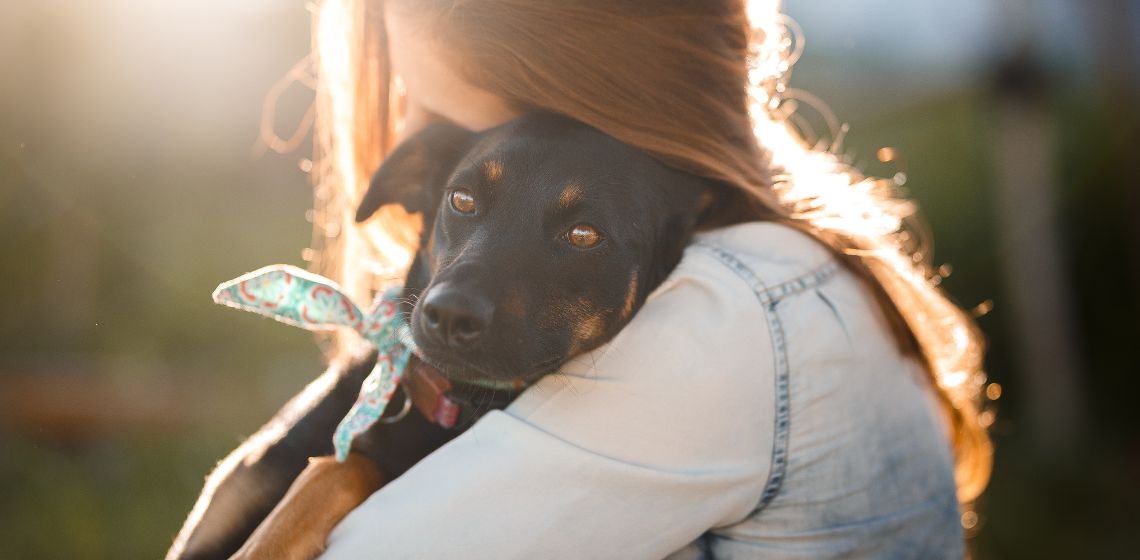Table of Contents
Making the decision to rescue a dog from a shelter can bring so much joy to families, but it is not a decision to be made lightly as adding a dog to your home can bring about many changes, both good and bad depending on how you look at it. If you’re considering adopting a dog, check out these expert tips before bringing home a new furry friend.
1. What is my lifestyle like right now and what are my expectations?
Before adopting a dog, potential pet parents should take a moment to seriously consider their current lifestyle and what they’re looking for in a canine companion. While there are many great health benefits to owning a dog, owning a dog is a big responsibility and should not be entered into lightly. It may take some time, but finding the right dog for your family can create an unbreakable, lifelong bond.
2. Who will be responsible for the dog?
For families with children, adopting a puppy is a popular choice as many parents want a dog that will grow up with their kids. However, parents planning on bringing a puppy home should ensure that they are ready to take on this responsibility and other duties of parenthood. Expecting children to care for pets is a great way to teach them responsibility, but parents should be prepared to ensure their new dog receives adequate care and attention to avoid potentially harmful consequences.
3. Am I in a place to financially care for a pet on a routine basis?
It’s no surprise that caring for a dog can bring added expenses to any family budget and for people considering adopting a pup, it’s an important aspect to consider. The average monthly cost of owning a dog is estimated to be anywhere between $42.66 and $86.69 depending on the size and breed of the dog. While this isn’t a huge sum of money to most, owners should consider if they are financially able to care for a dog before adopting one from a shelter or rescue.
Tips on Affordable Pet Care
For owners looking for the best way to afford care for their new dog, a variety of options are available to help them stay on track with medical care and prepare for any emergencies. Pet owners looking for affordable pet care options can check out the following services to help with pet care costs:
- Pet insurance
- Low-cost spay and neuter clinics
- Emergency pet care savings fund
- Coupons and rebates for preventive medications
- Prescription discounts at online pharmacies
- Price comparison apps for pet supplies and food
4. How much time am I able to commit to play, exercise, and enrichment for a dog each day?
Maybe one of the most important considerations to keep in mind before adopting a dog is how much time is required to keep a dog happy and healthy. Each dog has their own unique personality and many different breeds will have different requirements when it comes to exercise, playtime, and activities. When adopting from a shelter, most organizations have adoption counselors that can help potential pet parents find a dog that aligns with their lifestyle so you can find just the right dog for you.
5. Does my apartment/landlord/rental space allow animals?
For adopters currently living in rental properties, it’s important to consider how often moving may occur as well as confirming the pet policy for their apartment or rental space. While moving around a lot can cause undue stress for some dogs, many apartment buildings may also not allow pets while others may charge a pet deposit or monthly pet rent in addition to current monthly rent. Some apartments do not allow certain breeds or dogs over a predetermined weight limit and tenants should receive a clearly written pet policy from their landlord that ensures their new dog is welcome at the property before bringing them home.
6. Will my other pets get along with a new canine companion?
Although it’s important for current pet parents who are considering adding another furry friend to their family to ensure all the animals in the home get along, it’s even more important to follow the steps for proper introduction of a new dog to other animals in the home. When bringing a new dog home, follow these steps for a smooth transition for both new and current pets:
- Ensure that the home is properly situated before bringing home a new dog. This includes having plenty of space reserved for each animal in the house to reduce the risk of territorial aggression. Each pet should have their own separate eating and sleeping areas as well as “time out” zones for decompression.
- Allow the dogs to meet on neutral territory before bringing a new dog into the home or yard of the current dog. This can be accomplished by bringing both leashed dogs to an open area like a park for their first meeting.
- Carefully observe on leash interactions between the pets in a controlled environment. Pet owners should monitor for any signs of aggression such as raised hackles, bearing teeth, and growling and intervene or end the interaction if necessary.
- Once dogs are comfortable on neutral territory, introduce them in a home setting while supervising interactions. During supervised playtime, reward both dogs for good behavior by offering praise and treats to reinforce positive interactions.
It’s important for pet owners to keep in mind that dogs communicate with each other through growling as a way to let other dogs know they are doing something that they do not like. This interaction may be seen when first introducing dogs or puppies to one another and it can be a great way for dogs to teach each other. However, if this behavior leads to fighting, owners should enlist the help of a professional trainer to keep themselves and their pets safe.
7. Do I have time to commit to house training and dealing with other behavioral needs?
Everyone knows that puppies are cute, cuddly, and affectionate… until it comes to potty time. Adopters bringing a puppy home for the first time will have their hands full with behavioral training and potty training which requires a great deal of time and attention. Owners who do not think they have the time to dedicate to training may want to consider adopting an adult dog that is already housebroken to cut down on some of the responsibilities.
Rule of Threes
When bringing any new dog home, owners should be prepared for an adjustment period consisting of several days to months for a new dog to feel completely comfortable in their new home. In the animal shelter world, this is often referred to as the “Rule of Threes,” which translates to the amount of time in days, weeks, and months that it takes for a new dog to get accustomed to life in a new home. During this time, owners may notice some behavioral challenges as the dog adjusts that may rectify themselves or require intervention from the owner or a trained behavior.
8. Am I able to care for a pet with special needs?
This may not apply to all rescue dogs, but some serious consideration should be done for adopters considering choosing a pet with special needs. Adopting a special needs pet can look different for every family and can include a variety of ailments, but owners should ensure they have a detailed discussion with shelter staff and veterinarians to ensure their home is right for a dog with special needs.
9. Am I prepared to bring a new dog into my home?
Being prepared to bring a new dog into your home means more than just buying personalized food bowls or a matching leash and collar. It also means being mentally and emotionally prepared to give a piece of your heart to another living creature. New adoptive pet parents should make sure they ask plenty of questions and read up on pet ownership to be as prepared as possible for bringing home a new dog. Finding a trusted veterinarian in the community ahead of time can help pet parents stay informed and aware of their pet’s medical needs.
10. Is the whole family on board?
Adopting a new dog can be a life changing event for both the dog and the owners, but only if the whole family is on board. While most organizations require adopters to be at least 18 years of age at the time of adoption, adopters often have other family members or roommates at home and everyone should be on board with bringing a new dog into the home. Many times, adopters have had to return dogs due to a situation within the family which causes undue stress and anxiety for dogs. Holding a family meeting to make sure all members of the family agree with adding a new pet to the household is paramount to success.
FAQs
The cost to adopt a dog from a shelter can vary greatly with adoption rates ranging from as little as $50 to over $500. This adoption fee covers the shelter’s cost to care for pets including veterinary care, sterilization surgery, cost for food, and more.
No. Dogs end up in shelters for a variety of reasons and there are plenty of amazing, loving dogs waiting for their forever homes!
All animal shelters and rescue organizations have a different process when it comes to adoption. Some offer same day adoptions while others require processing an adoption application before an owner can be approved. Shelter staff will be able to assist adopters with the application process as well as any questions they may have regarding adoption.

Carrie first started working with animals when she was 15 years old and has never looked back. After graduating from San Juan College with an Associate’s in Animal Science in 2011, Carrie received her license to practice as a veterinary technician in the state of Virginia where she spent 10 years working as an ICU nurse and internal medicine technician in specialty practices throughout the Richmond area. She is currently volunteering at animal hospitals and shelters in the Caribbean with her two rescue chihuahuas, Slim and Penelope, at her side.








